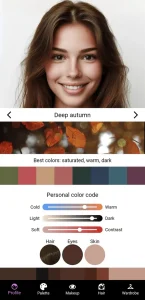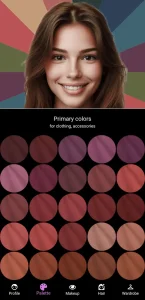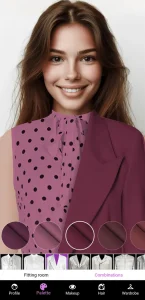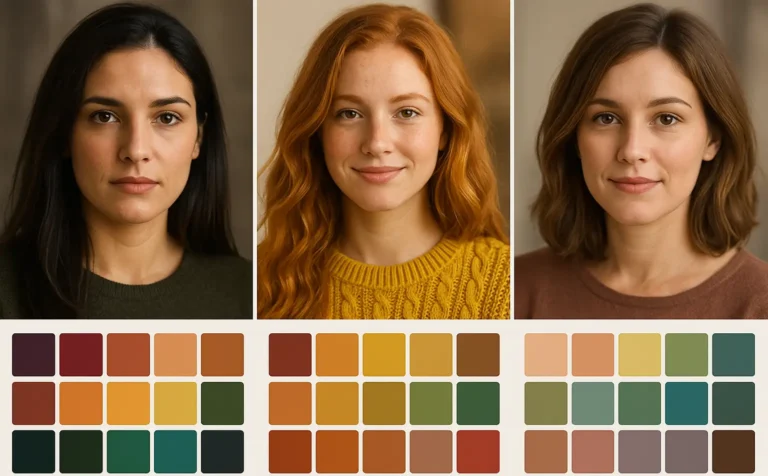Finding the perfect makeup shade can be a game-changer in your beauty routine, transforming your look and boosting your confidence.
Understanding your skin undertones is the first step, helping you find out whether you have cool, warm, or neutral tones .
Determining your overall skin tone is essential for selecting the right foundations, lipsticks, and blushes .
This guide offers practical tips for finding your ideal shade, adapting your look for different seasons, and consulting with a makeup professional .
Learn how to improve your natural beauty !
Understanding Skin Undertones

Knowing your skin’s undertones is important for improving your beauty routine and achieving a perfect look through personal color analysis . It involves identifying the underlying hues present in a person’s complexion, which can be categorized into three main types: warm, cool, and neutral.
Each undertone affects how different colors of makeup, such as foundations, lipsticks, and blushes, complement the skin, guiding individuals toward the most flattering colors and enhancing their natural beauty.
By learning about subtle color variations, you can choose makeup with confidence and select beauty products that fit your own color preferences and personal style .
Identifying Cool, Warm, and Neutral Undertones
Identifying whether one has cool, warm, or neutral undertones is essential for effective color matching in makeup and fashion.
This fundamental knowledge gives the power to individuals to tailor their beauty routines and wardrobe selections more effectively, using color theory and color coordination .
For example, looking at the color of veins on the wrist can help; blue or purple veins usually mean cool undertones, while greenish veins generally indicate warm tones.
To experiment further, one might consider which jewelry complements their skin best—silver often enhances cool undertones, whereas gold tends to flatter those with warm undertones .
People with neutral undertones can wear both metals, giving them many options.
Using colors like lavender or soft pastels for those with cool shades , and rich earth tones or corals for warm shades , can greatly improve a person’s natural beauty, giving them a unique and balanced appearance.
Determining Your Skin Tone
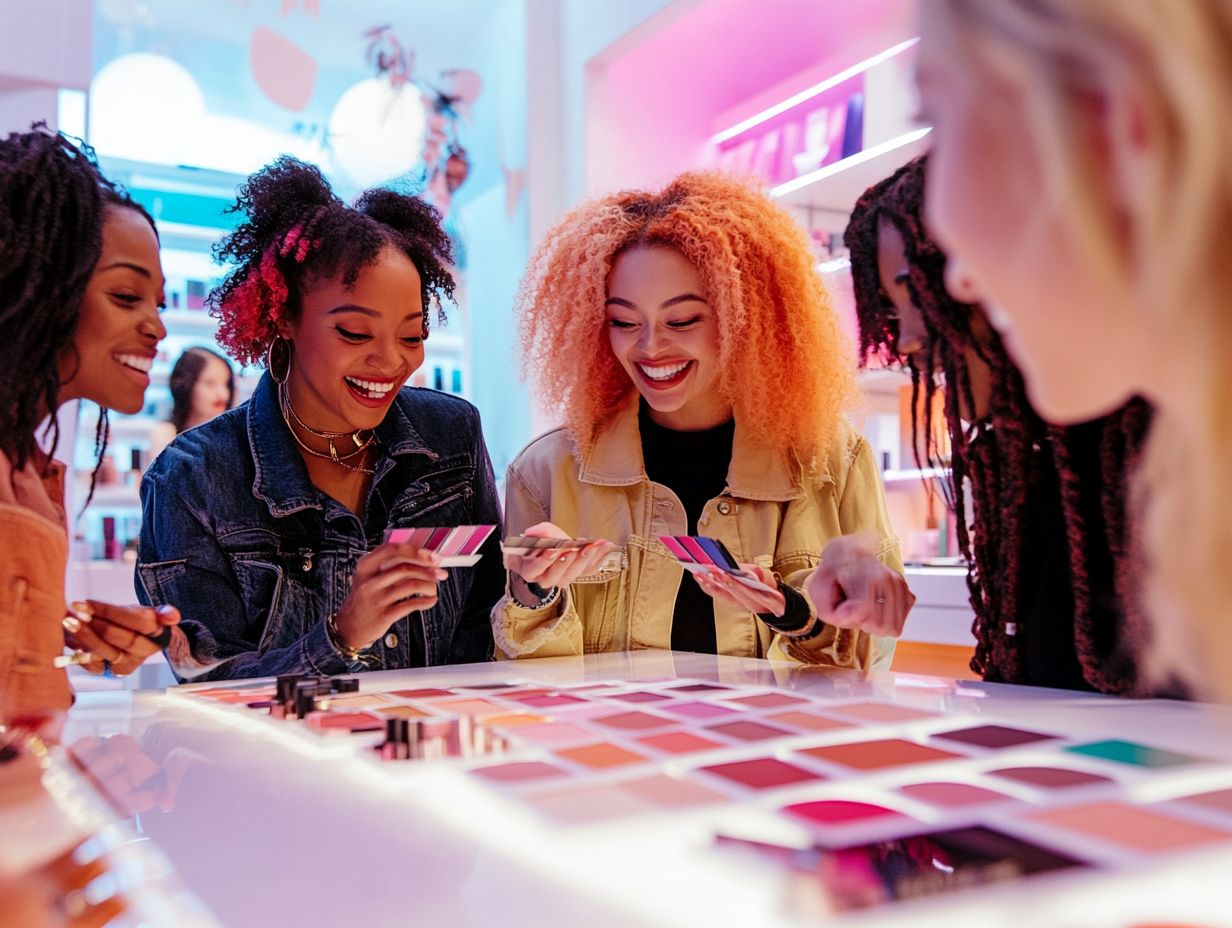
Figuring out your skin tone is important for choosing makeup shades that match your natural beauty and create a balanced look. This process involves assessing the skin’s hue, saturation, and brightness to categorize it into different skin tone groups, which can include fair, medium, and deep shades.
Every skin tone has specific traits, including color depth and contrast , that affect which colors match well. It’s important to know how various shades and brightness levels work with your skin. Studying skin tone closely helps people choose beauty products that fit their appearance and increase their confidence when using makeup. color profiles and skin compatibility .
Assessing Your Skin’s Hue and Saturation
Checking your skin’s color is important for improving your natural beauty and getting a well-balanced appearance. Hue is the basic color of the skin, and saturation shows how strong that color is, while luminosity adds to the overall effect. A thorough skin analysis involves looking at both these attributes to determine how they affect the overall complexion.
For example, a skin tone with more red might look great with softer colors, while a less intense color might look better with bright shades. Recognizing these relationships allows for better color matching in makeup application.
To accurately find out one’s specific color and intensity, using natural light is necessary for figuring it out. visual aesthetics . This method uncovers the true undertones of the skin without artificial distortion.
Trying out different makeup items, especially foundations and concealers, gives useful knowledge about texture and finish . With differing formulations and textures, these products can dramatically change the perception of hue and saturation, helping individuals make informed choices.
Knowing how these elements work together improves the choice of foundation shades and is important in applying blush and eyeshadows, resulting in a balanced and smooth look with coordinated color combinations .
Choosing the Right Shade for Your Skin Tone

Choosing the right shade for your skin tone is essential in creating a polished and flattering appearance, guided by color psychology . The process involves choosing foundation colors that match your skin perfectly, and finding lipstick and blush colors that bring out your natural beauty.
Finding the right match improves your makeup and makes you feel more confident. Using tools like online shade finders and color swatches can be very helpful in choosing the right beauty products. These tools help people find their best colors for a balanced and attractive look.
Matching Foundations, Lipsticks, and Blushes
Finding the right foundation, lipstick, and blush for your skin tone is very important in any beauty routine . These items can greatly change how you look. Choosing the right foundation means knowing how different shades and undertones work with your skin.
Similarly, selecting lipsticks and blushes requires attention to color preferences and the desired aesthetic outcome. By choosing the right colors, people can highlight their natural features and achieve a look that showcases their own beauty.
To effectively achieve this, it’s essential to test shades in natural light, allowing one to see how products blend seamlessly into the complexion. Considering whether undertones are warm, cool, or neutral can improve a makeup routine.
For example, warm-toned individuals might find success with gold-based foundations and coral lipsticks, while cool-toned users may gravitate towards rosy hues. Using color-matching tools like swatch cards or mobile apps can simplify this process, making it easier to identify suitable shades.
Using a good foundation brush or sponge helps apply makeup easily, giving a smooth finish that improves your appearance, enhancing the skin health .
Tips for Finding Your Perfect Shade
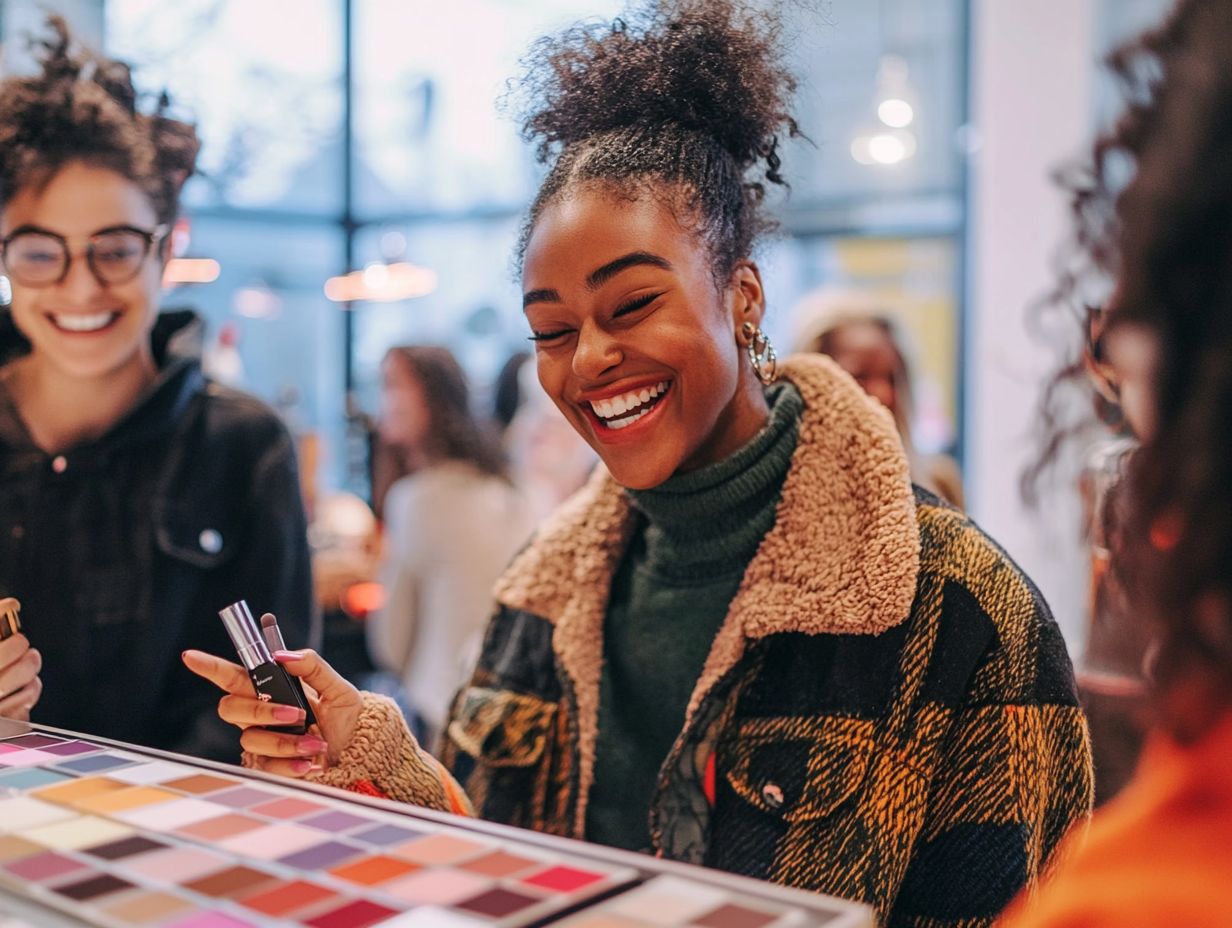
Choosing the right color for you can be both satisfying and difficult in the beauty world, as it takes trying out different options and exploring beauty trends .
To achieve optimal results, consider using swatches in natural light to assess how different products complement your skin tone. Trying out samples can help you see how a product works with your skin over time, making sure the chosen shade matches your skin’s unique complexion .
Talking to a beauty expert can improve your search by giving you personalized color advice that matches your personal style .
Trying Samples and Swatches
Trying samples and swatches is an essential strategy for discovering the right shades that complement your skin tone. By applying swatches directly to the skin, individuals can assess how colors interact with their unique complexion in real-time, evaluating the swatch’s hue and saturation against their natural skin color. This hands-on approach allows for effective shade comparison and aids in making informed decisions about which beauty products to invest in.
Ultimately, this practice contributes to a more personalized beauty experience, aligning colors with individual preferences and skin compatibility .
When using samples and swatches, pay close attention to where you put them and the lighting to get the best results.
For instance, swatching products in natural daylight can reveal true colors, stopping the common pitfall of relying solely on artificial lighting, which may distort shades and affect contrast .
Each product can behave differently; a foundation that appears warm in a tube might look stark against cooler undertones, and blush can vary dramatically in intensity across skin types .
It’s important to regularly check how products sit on various skin types, as oily or dry spots can change the final look. This highlights the need for considering all factors when matching colors.
Consulting with a Makeup Professional
Talking with a makeup expert can give useful beauty tips to help you find the best colors for your beauty routine. These experts know a lot about color and can assess your unique skin tone and undertones to offer customized advice through beauty consultations . A one-on-one consultation can help find products that match a person’s style and improve their appearance.
By using the knowledge of a beauty consultant, individuals can confidently choose from the wide range of cosmetics, making sure their choices give the best results.
Working with these professionals can greatly improve the makeup experience by showing clients new methods and the latest styles they might not have thought about before, enhancing DIY beauty .
These interactions often help in learning how to improve features by using specific color mixes and ways to apply them, with guidance on color coordination .
People who ask for advice get continuous help, so they can make confident and knowledgeable decisions about their beauty options. Working together boosts confidence and turns applying makeup from a regular task into a fun and artistic activity.
Adapting Your Shade for Different Seasons
Adapting your shade for different seasons is essential for maintaining a harmonious look as your skin tone may change throughout the year, according to seasonal color analysis . Changes in skin color during different seasons can be affected by things like time in the sun and how moisturized your skin is. It’s important to change your makeup to match these changes.
For example, during summer, people often prefer using lighter foundation and bright lip colors, whereas in winter, they might choose darker shades and softer tones.
By learning about seasonal color trends and their connection to your individual skin tone, you can keep your beauty routine updated and suitable for your complexion .
Adjusting for Changes in Skin Tone Using Seasonal Palettes
Matching your makeup to your skin tone and undertones is essential for a unified and attractive look as the seasons change. Factors such as sun exposure and climate can significantly impact skin tone, leading individuals to require different color matching techniques throughout the year. It is essential to evaluate how your complexion may shift, allowing for adjustments in foundation shades, blush colors, and lipsticks. Utilizing a makeup guide can provide personalized color recommendations that align with your personal style.
Using this flexibility makes your beauty routine better and helps you learn about your color preferences, including recognizing warm shades and cool shades, and how they change with the seasons. By doing so, you can change with the seasons and develop a matching set of colors.
Regularly assessing the skin can be done through simple methods like swatch testing various foundation shades on the jawline or taking photos in natural light to compare tonal shifts. This also involves knowing color depth and skin undertones to make well-informed choices.
As skin tone varies, so should makeup products; for instance, lighter formulations and cooler tones often suit the warmer months, while richer shades and heavier textures work well in the winter. This method involves learning about the color wheel and using color psychology to improve visual appeal.
Swapping out products like tinted moisturizers for full-coverage foundations or changing from bright lip colors to deeper hues can completely refresh the complexion. These changes highlight the importance of texture and finish in achieving your desired makeup looks.
Participating in this continuous study helps people improve their appearance and feel confident in their changing beauty. Exploring beauty tips and talking to professional makeup artists or using a shade finder can give helpful information about cosmetic products and how they suit different skin types.




